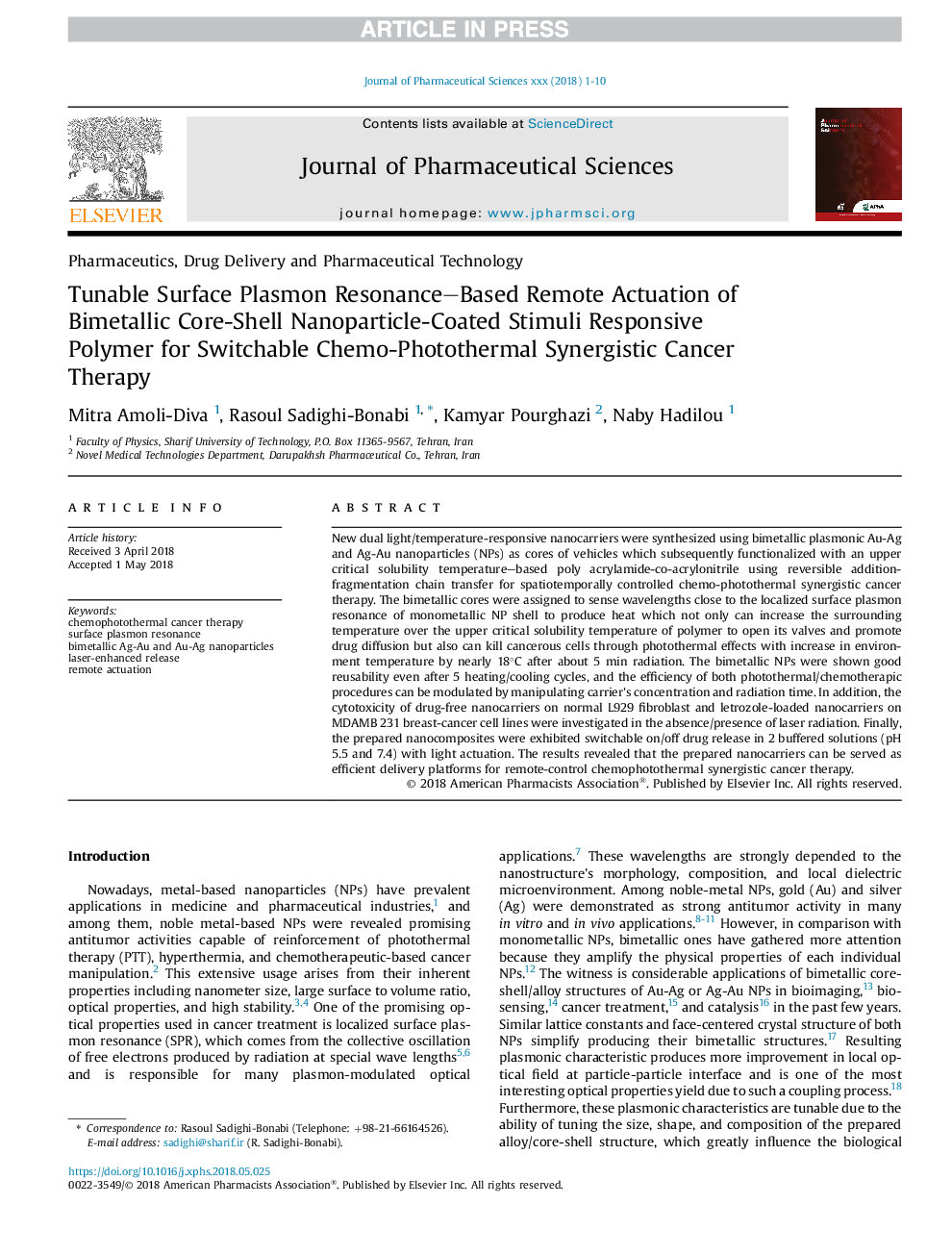| Article ID | Journal | Published Year | Pages | File Type |
|---|---|---|---|---|
| 10158197 | Journal of Pharmaceutical Sciences | 2018 | 10 Pages |
Abstract
New dual light/temperature-responsive nanocarriers were synthesized using bimetallic plasmonic Au-Ag and Ag-Au nanoparticles (NPs) as cores of vehicles which subsequently functionalized with an upper critical solubility temperature-based poly acrylamide-co-acrylonitrile using reversible addition-fragmentation chain transfer for spatiotemporally controlled chemo-photothermal synergistic cancer therapy. The bimetallic cores were assigned to sense wavelengths close to the localized surface plasmon resonance of monometallic NP shell to produce heat which not only can increase the surrounding temperature over the upper critical solubility temperature of polymer to open its valves and promote drug diffusion but also can kill cancerous cells through photothermal effects with increase in environment temperature by nearly 18°C after about 5 min radiation. The bimetallic NPs were shown good reusability even after 5 heating/cooling cycles, and the efficiency of both photothermal/chemotherapic procedures can be modulated by manipulating carrier's concentration and radiation time. In addition, the cytotoxicity of drug-free nanocarriers on normal L929 fibroblast and letrozole-loaded nanocarriers on MDAMB 231 breast-cancer cell lines were investigated in the absence/presence of laser radiation. Finally, the prepared nanocomposites were exhibited switchable on/off drug release in 2 buffered solutions (pH 5.5 and 7.4) with light actuation. The results revealed that the prepared nanocarriers can be served as efficient delivery platforms for remote-control chemophotothermal synergistic cancer therapy.
Keywords
Related Topics
Health Sciences
Pharmacology, Toxicology and Pharmaceutical Science
Drug Discovery
Authors
Mitra Amoli-Diva, Rasoul Sadighi-Bonabi, Kamyar Pourghazi, Naby Hadilou,
